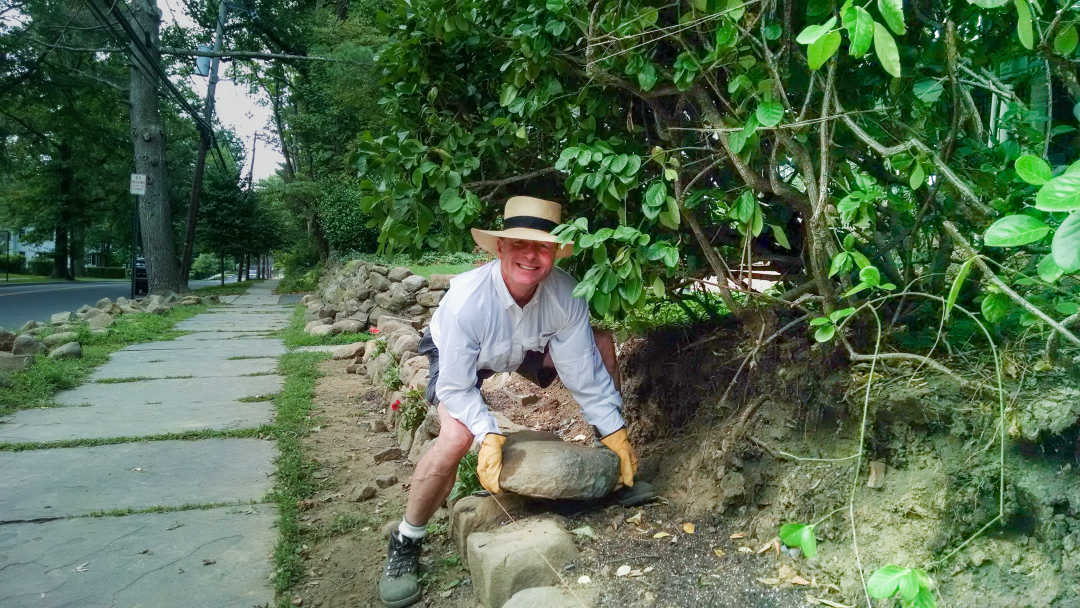Older Adults Are Saying Goodbye to MSK Pain and Hello to the Activities They Love
So what do older users say about engaging in a digital MSK program at home? Here are two success stories from Hinge Health members.
- Hinge Health Learning Center
- Articles
- Older Adults Are Saying Goodbye to MSK Pain and Hello to the Activities They Love
Our Hinge Health Experts
Louis Dickey, MD
Chronic musculoskeletal (MSK) pain is a leading cause of disability and healthcare costs in the United States, especially among older adults. Studies have shown that among older adults, persistent musculoskeletal pain is highly prevalent, with rates ranging from 40% to 60%. Multi-joint pain contributes to significant disability among older adults. Additionally, medical treatments for pain have been estimated to cost the United States about $300 billion annually. The good news, however, is that digital MSK programs are changing the game for Medicare members by enabling them to work and enjoy life without pain. In a recent clinical study, older adults demonstrated high engagement and completion rates with a digital MSK program.
Clinical research reveals older adults have high engagement in a digital MSK program
Recently published in Frontiers in Digital Health, a longitudinal clinical study evaluated digital MSK program usage and outcomes by generation. This study focused on 41,241 adults who had experienced MSK pain for 12 weeks or more and who participated in Hinge Health’s Digital MSK Clinic. The study participants spanned several age groups, including Gen Z, millennials, Gen X, working age baby boomers, retiree age baby boomers, and the silent generation.
While all participants had consistently high program completion rates and experienced significant reductions in their MSK pain, the older generations—Gen Xers, working-age baby boomers, and retirees—were the most active and had the highest Hinge Health program completion rates.
Key findings included the following:
Retirees completed 19 more exercise therapy sessions, accessed 11 more articles, and sent five more messages to their clinical team of health coaches and physical therapists than the Gen Zers and millennials did.
Over three-quarters (83%) of the retirees completed the program, which exceeded the relatively high completion rates (67% to 82%) of younger generations.
The older generation had higher rates of anxiety improvement at 12 weeks than Gen Zers and millennials. The researchers hypothesized that Hinge Health’s focus on MSK-related issues, such as fall prevention, was reassuring to older adults.
This study debunks the myth that older people don’t actively engage in digital care. In fact, older adults may favor digital MSK programs because they empower them to manage their needs on their own and in a home setting. This is particularly important for people with challenges related to mobility, transportation, or access to care. In addition, Hinge Health’s one-on-one health coaches and physical therapists work closely with participants every step of the way—from getting comfortable with using the digital technology and designing a personalized exercise therapy care plan to making key lifestyle changes necessary for recovery.
So what do older users say about engaging in a digital MSK program at home? Here are two success stories from Hinge Health members.
Trading knee pain for yoga, gardening, and hiking
Greg Ammon, a 65-year-old State of New Jersey employee, is no stranger to health challenges. In 2015, he was diagnosed with cancer and told he had three months to live. However, his chemotherapy treatment was successful and beat the odds. Unfortunately the chemotherapy, combined with annoying knee pain, had him feeling tired and unlike himself.
Greg has always been active, walking, doing yoga, hiking, and gardening. Yet his knee pain often limited what he could do and how much he could handle. Greg said, “I was really anxious about my knee pain. I worried about how the pain would progress, since my family has a history of knee problems.”
He found himself using walking sticks for support and balance when outside. His doctor wanted him to get gel injections in his knees, but Greg didn’t like the idea of the recurring appointments and treatments. When his insurance company sent him information about Hinge Health, he decided to give it a try.
Greg participated in the Hinge Health program for 25 weeks, and his knee pain is nonexistent. “I’m able to do yoga moves that I hadn’t been able to do previously. The other day, I went on a four-mile hike and felt great,” he commented. In addition, one of Greg’s favorite hobbies is maintaining his 275-yard garden. He noted, “My garden is my pride, and it’s a blessing to be able to continue working on it.”
From Greg’s perspective, the Hinge Health program as a whole has been very beneficial. “The tablet and sensors are great, and the 15-minute commitment is beautiful. I can talk myself into 15 minutes a day! The program and readings are really well designed, well researched, and helpful,” he said.
Greg Ammon - Hinge Health Chronic Knee Program Particpant
Hinge Health has also gotten Greg interested in other benefit offerings and wellness programs. Not only are his knees feeling much better, he’s lost 20 pounds. When asked for his advice to those thinking about joining Hinge Health, Greg said, “I’ve shared information about the program with my friends on Facebook. Talk to your insurance program and see if it’s available! I’m a convert—it sure beats knee replacements, losing the ability to do the things I love, injections, or aging rapidly.”
MSK pain shouldn’t mean retirement
Like Greg, Stacey Andringa is all too familiar with knee pain. This 71-year-old had arthroscopic surgery on her right knee in the early 2000s. Years later, her doctor recommended a full knee replacement, and Stacey had that procedure in 2017. Even after surgery, however, her pain lingered and she never regained full flexion or extension of her right knee.
Stacey spent most of her workday on her feet. Her left knee was starting to feel the strain, but she didn’t want to pursue surgery. Stacey tried changing her work shoes and occasionally took naproxen or Tylenol to relieve the pain. In September 2019, Stacey decided to give Hinge Health a try.
Aside from the physical benefits that she’s seen and the reduction in her pain, Stacey feels better mentally. “Although I’m at retirement age, I love my job. The thought of my knee pain limiting what I could do and preventing me from working was getting me down. I’m happy about the prospect of working for longer without pain,” she explained.
Before joining Hinge Health, Stacey avoided certain knee exercises, on her doctor’s advice. She was surprised by how effective the Hinge Health exercise program has been. Using the tablet and sensors is easy, as is setting them up. While Stacey liked using Hinge Health on her tablet, installing the app on her phone was a game changer.
Stacey commented, “I recommend Hinge Health to everyone! It’s been a godsend. The program is covered by our plan, so what do you have to lose?”
Programs like Hinge Health clearly hold promise for the growing population of older Americans with chronic MSK pain. Reductions in pain and anxiety not only lower healthcare costs, they also positively influence several Star Rating measures—an important performance metric for Medicare plans.
Hinge Health is now available to over half a million seniors, and demand continues to grow. To learn more, feel free to contact us.

